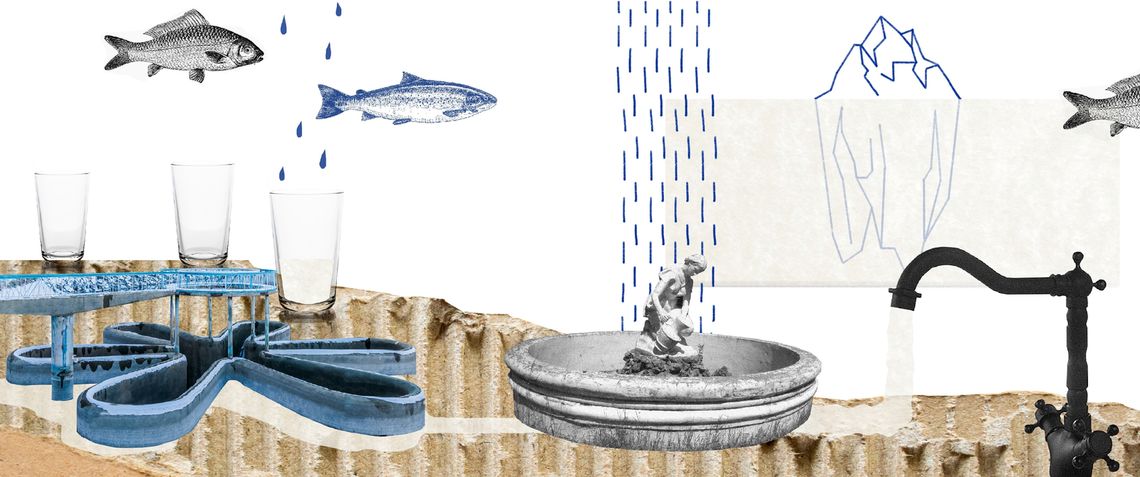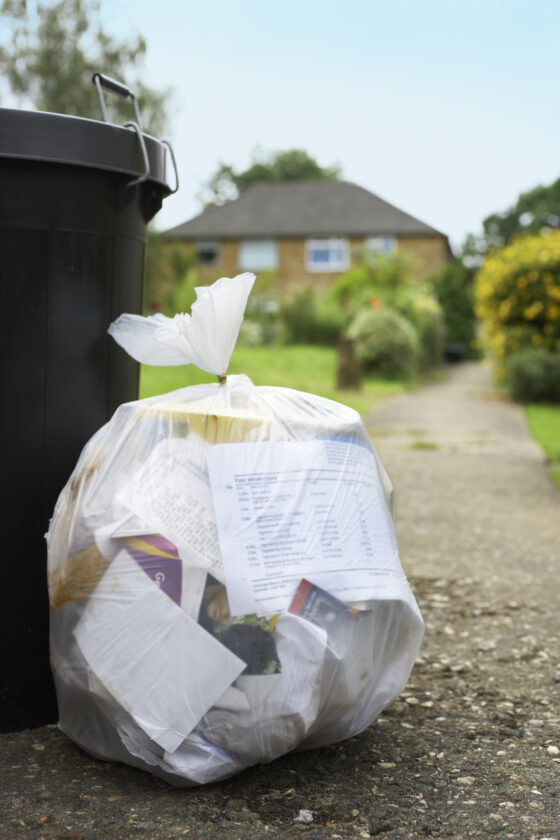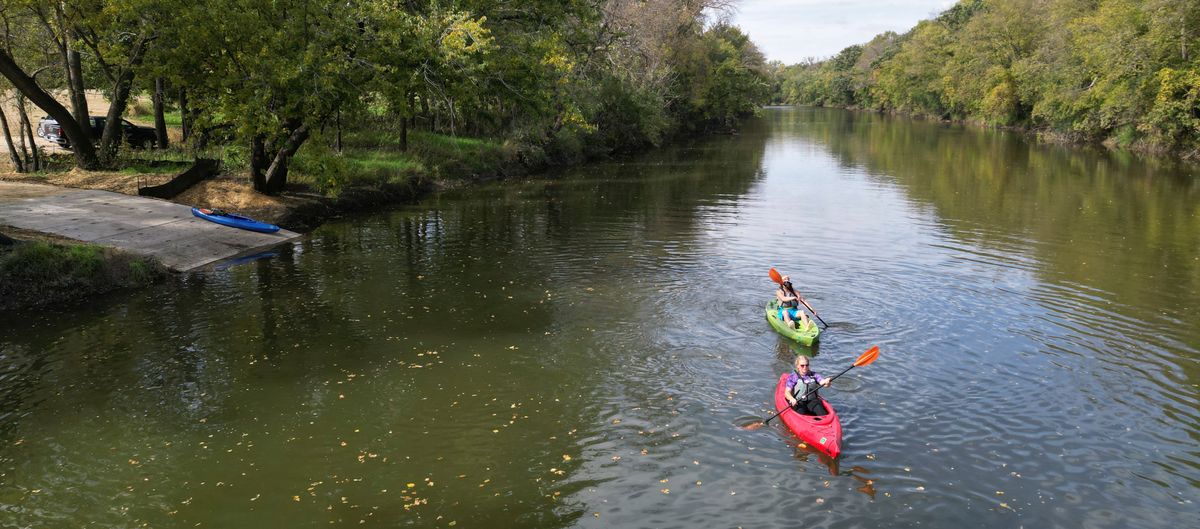Drying rivers could cause water shortages for 850 million people – Earth.com

Report on Projected Global River Water Scarcity and Implications for Sustainable Development Goals
Executive Summary
A recent study led by researchers at Northeastern University indicates a severe future threat to global water security, directly challenging the achievement of Sustainable Development Goal 6 (Clean Water and Sanitation). Utilising advanced CMIP6 Earth systems models, the research projects that by 2100, approximately 850 to 900 million people could face significant reductions in river water availability. This figure is more than triple previous estimates, highlighting an urgent need for revised strategies in climate action and water management to meet the 2030 Agenda for Sustainable Development.
Advanced Climate Modeling and SDG Implications
The study’s findings are based on a comparative analysis of two generations of climate models, CMIP5 and the more recent CMIP6. The enhanced capabilities of the CMIP6 models provide a more accurate and sobering projection of future climate impacts, which is critical for planning and implementing effective strategies for SDG 13 (Climate Action).
Methodological Advancements
The superiority of the CMIP6 models stems from several key improvements that allow for a more precise assessment of risks to the SDGs. These advancements include:
- Finer Spatial Resolution: CMIP6 models operate on a 100-kilometer grid, a significant improvement over the 500-kilometer resolution of CMIP5, allowing for more detailed regional analysis.
- Comprehensive Physics: The models incorporate more advanced physics, providing better simulations of complex interactions between land, ocean, and ice systems.
- Improved Parameterization: Critical processes such as cloud formation and atmospheric convection are handled more effectively, leading to more reliable projections.
Model Validation and Consensus
To ensure the reliability of the projections, researchers evaluated the models based on their ability to replicate historical data (skill) and their agreement with one another (consensus). This rigorous validation process confirms that the improved resolution and physics of the CMIP6 models add significant value, providing a stronger evidence base for policymakers addressing climate-related threats to sustainable development.
Projected Impacts on Global Water Security and SDG 6
The research focused on the 30 largest river basins globally, including the Amazon, Congo, Ganges, and Nile, which are lifelines for vast populations and economies. The projections reveal a significant threat to water availability, with profound consequences for multiple Sustainable Development Goals.
Analysis of River Runoff
River runoff—the flow of water from land into rivers—is a critical indicator of water availability for human consumption, agriculture, and energy production. The five most accurate CMIP6 models predict that 40% of the world’s major rivers will experience reduced runoff by the end of the century. This directly threatens the core targets of SDG 6 (Clean Water and Sanitation).
Human Impact and Interlinked SDGs
The projected decrease in water availability is expected to affect approximately 850 million people. This water scarcity has cascading effects on other development goals:
- SDG 2 (Zero Hunger): Reduced water for irrigation will jeopardise food production and security for millions.
- SDG 1 (No Poverty): Water shortages can cripple local economies, particularly those dependent on agriculture, exacerbating poverty.
- SDG 7 (Affordable and Clean Energy): Decreased river flow will reduce the capacity of hydroelectric power plants, impacting clean energy supplies.
- SDG 11 (Sustainable Cities and Communities): Growing urban centres in affected basins will face immense pressure on their water supply systems.
Scenario Analysis and Pathways to Sustainable Water Management
The study assessed five different emissions pathways, revealing that concerted global efforts can mitigate, but not eliminate, the impending water crisis. The findings underscore the critical importance of global cooperation in achieving climate and water-related SDGs.
The Role of Climate Action (SDG 13)
Results show a direct correlation between greenhouse gas emissions and the severity of water shortages. In a lower-emissions, “greener” world scenario consistent with robust climate action under SDG 13, the number of people affected by drying rivers would be reduced from nearly 900 million to 500 million. While a significant improvement, this still represents a profound challenge to global water security, reinforcing the urgency of transitioning to sustainable practices.
Informing Policy and Fostering Partnerships (SDG 17)
The primary objective of this research is to provide actionable intelligence for two key groups:
- Policymakers and Water Resource Managers: The study equips decision-makers with reliable, data-driven projections to formulate resilient water management strategies and infrastructure plans.
- Scientists and Modelers: By identifying the most dependable models, the research helps guide future scientific efforts to further refine climate projections.
Ultimately, this work serves as a critical tool for fostering partnerships and informing evidence-based policies, essential for navigating the challenges of a changing climate and achieving the Sustainable Development Goals.
Analysis of Sustainable Development Goals (SDGs) in the Article
1. Which SDGs are addressed or connected to the issues highlighted in the article?
-
SDG 6: Clean Water and Sanitation
- The article’s central theme is the projected reduction in access to river water for a significant portion of the global population. It directly discusses future water availability, water shortages, and the impact on populations dependent on major river basins, which is the core focus of SDG 6.
-
SDG 13: Climate Action
- The article attributes the predicted water shortages to the effects of climate change, analyzed through advanced “Earth systems models.” It explicitly links different “emissions pathways” to the severity of the water crisis, highlighting the necessity of climate action to mitigate these impacts.
-
SDG 11: Sustainable Cities and Communities
- The research points out that the world’s largest river basins “support vast populations.” A drastic reduction in water availability threatens the viability and resilience of these communities, directly connecting to the goal of making human settlements sustainable and safe from water-related disasters.
-
SDG 17: Partnerships for the Goals
- The article describes a collaborative research effort involving scientists from Northeastern University. Furthermore, it states that the study’s goal is to inform and equip “policymakers and water resource managers” as well as “scientists and modelers,” demonstrating a partnership between science, policy, and practice to address a global challenge.
2. What specific targets under those SDGs can be identified based on the article’s content?
-
Target 6.4: By 2030, substantially increase water-use efficiency across all sectors and ensure sustainable withdrawals and supply of freshwater to address water scarcity and substantially reduce the number of people suffering from water scarcity.
- The article directly addresses this target by projecting that “nearly a billion people” could face “drastically reduced access to river water,” quantifying the number of people who will suffer from water scarcity.
-
Target 6.5: By 2030, implement integrated water resources management at all levels, including through transboundary cooperation as appropriate.
- The study focuses on the “30 biggest river basins,” such as the Nile and Ganges, which are transboundary systems. The research aims to inform “water resource managers” for “future planning,” which is the foundation of integrated water resources management.
-
Target 13.1: Strengthen resilience and adaptive capacity to climate-related hazards and natural disasters in all countries.
- The article identifies a severe climate-related hazard—a massive reduction in river runoff. By providing more accurate projections, the study equips policymakers to develop strategies to strengthen resilience and adapt to future water shortages.
-
Target 11.5: By 2030, significantly reduce the number of deaths and the number of people affected… by disasters, including water-related disasters…
- The research quantifies the number of people who would be affected by a slow-onset, water-related disaster, stating that “roughly 850 million people” would be impacted by reduced river runoff.
3. Are there any indicators mentioned or implied in the article that can be used to measure progress towards the identified targets?
-
Number of people affected by water scarcity:
- The article provides specific figures that can be used as indicators: “nearly a billion people,” “roughly 850 million people,” and “500 million people” in a lower-emissions scenario. These numbers directly measure the human impact of water scarcity.
-
Change in freshwater availability (River Runoff):
- “Runoff” is explicitly mentioned as a key metric for water availability. The prediction that “40% of these rivers will experience reduced runoff” serves as a direct indicator of the change in freshwater bodies.
-
Use of scientific models for policy-making:
- The article emphasizes the use of improved climate models (CMIP6) to inform “policymakers and water resource managers.” The adoption and application of such advanced scientific tools for planning can be seen as an indicator of improved institutional capacity for climate adaptation and water management.
-
Projections under different emissions scenarios:
- The study’s analysis of five different “emissions pathways” provides a clear indicator of the effectiveness of climate mitigation efforts. The difference in the number of people affected between high-emission scenarios (850-900 million) and a “greener world” scenario (500 million) measures the potential success of climate action.
4. Table of SDGs, Targets, and Indicators
| SDGs | Targets | Indicators |
|---|---|---|
| SDG 6: Clean Water and Sanitation | 6.4: Address water scarcity and reduce the number of people suffering from it. |
|
| SDG 6: Clean Water and Sanitation | 6.5: Implement integrated water resources management. |
|
| SDG 13: Climate Action | 13.1: Strengthen resilience and adaptive capacity to climate-related hazards. |
|
| SDG 11: Sustainable Cities and Communities | 11.5: Reduce the number of people affected by water-related disasters. |
|
| SDG 17: Partnerships for the Goals | 17.16 & 17.17: Enhance multi-stakeholder partnerships that mobilize and share knowledge, expertise, technology and financial resources. |
|
Source: earth.com

What is Your Reaction?
 Like
0
Like
0
 Dislike
0
Dislike
0
 Love
0
Love
0
 Funny
0
Funny
0
 Angry
0
Angry
0
 Sad
0
Sad
0
 Wow
0
Wow
0













































































